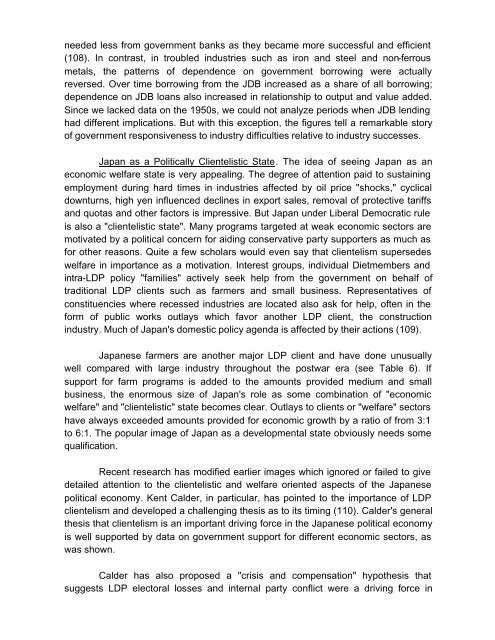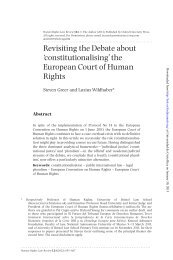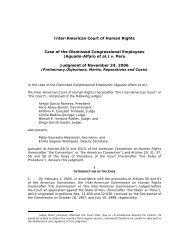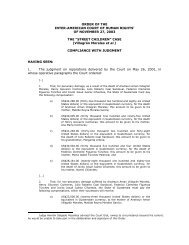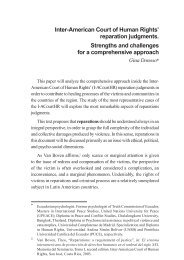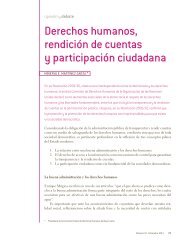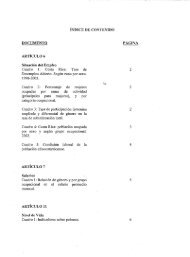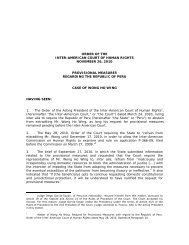The Political Economy of Japan Bradley M. RICHARDSON
The Political Economy of Japan Bradley M. RICHARDSON
The Political Economy of Japan Bradley M. RICHARDSON
- No tags were found...
You also want an ePaper? Increase the reach of your titles
YUMPU automatically turns print PDFs into web optimized ePapers that Google loves.
needed less from government banks as they became more successful and efficient(108). In contrast, in troubled industries such as iron and steel and non-ferrousmetals, the patterns <strong>of</strong> dependence on government borrowing were actuallyreversed. Over time borrowing from the JDB increased as a share <strong>of</strong> all borrowing;dependence on JDB loans also increased in relationship to output and value added.Since we lacked data on the 1950s, we could not analyze periods when JDB lendinghad different implications. But with this exception, the figures tell a remarkable story<strong>of</strong> government responsiveness to industry difficulties relative to industry successes.<strong>Japan</strong> as a <strong>Political</strong>ly Clientelistic State. <strong>The</strong> idea <strong>of</strong> seeing <strong>Japan</strong> as aneconomic welfare state is very appealing. <strong>The</strong> degree <strong>of</strong> attention paid to sustainingemployment during hard times in industries affected by oil price "shocks," cyclicaldownturns, high yen influenced declines in export sales, removal <strong>of</strong> protective tariffsand quotas and other factors is impressive. But <strong>Japan</strong> under Liberal Democratic ruleis also a "clientelistic state". Many programs targeted at weak economic sectors aremotivated by a political concern for aiding conservative party supporters as much asfor other reasons. Quite a few scholars would even say that clientelism supersedeswelfare in importance as a motivation. Interest groups, individual Dietmembers andintra-LDP policy "families" actively seek help from the government on behalf <strong>of</strong>traditional LDP clients such as farmers and small business. Representatives <strong>of</strong>constituencies where recessed industries are located also ask for help, <strong>of</strong>ten in theform <strong>of</strong> public works outlays which favor another LDP client, the constructionindustry. Much <strong>of</strong> <strong>Japan</strong>'s domestic policy agenda is affected by their actions (109).<strong>Japan</strong>ese farmers are another major LDP client and have done unusuallywell compared with large industry throughout the postwar era (see Table 6). Ifsupport for farm programs is added to the amounts provided medium and smallbusiness, the enormous size <strong>of</strong> <strong>Japan</strong>'s role as some combination <strong>of</strong> "economicwelfare" and "clientelistic" state becomes clear. Outlays to clients or "welfare" sectorshave always exceeded amounts provided for economic growth by a ratio <strong>of</strong> from 3:1to 6:1. <strong>The</strong> popular image <strong>of</strong> <strong>Japan</strong> as a developmental state obviously needs somequalification.Recent research has modified earlier images which ignored or failed to givedetailed attention to the clientelistic and welfare oriented aspects <strong>of</strong> the <strong>Japan</strong>esepolitical economy. Kent Calder, in particular, has pointed to the importance <strong>of</strong> LDPclientelism and developed a challenging thesis as to its timing (110). Calder's generalthesis that clientelism is an important driving force in the <strong>Japan</strong>ese political economyis well supported by data on government support for different economic sectors, aswas shown.Calder has also proposed a "crisis and compensation" hypothesis thatsuggests LDP electoral losses and internal party conflict were a driving force in


